 History
History  History
History  Animals
Animals Ten Times It Rained Animals (Yes, Animals)
 Mysteries
Mysteries 10 Devastating Missing Child Cases That Remain Unsolved
 Creepy
Creepy 10 Scary Tales from the Middle Ages That’ll Keep You up at Night
 Humans
Humans 10 One-of-a-kind People the World Said Goodbye to in July 2024
 Movies and TV
Movies and TV 10 Holiday Movies Released at Odd Times of the Year
 Politics
Politics 10 Countries Where Religion and Politics Are Inseparable
 Weird Stuff
Weird Stuff 10 Freaky Times When Famous Body Parts Were Stolen
 Miscellaneous
Miscellaneous 10 Interesting Things Manufacturers Stopped Making and Why
 Gaming
Gaming 10 Funny Tutorials in Games
 History
History 10 Desperate Last Stands That Ended in Victory
 Animals
Animals Ten Times It Rained Animals (Yes, Animals)
 Mysteries
Mysteries 10 Devastating Missing Child Cases That Remain Unsolved
Who's Behind Listverse?

Jamie Frater
Head Editor
Jamie founded Listverse due to an insatiable desire to share fascinating, obscure, and bizarre facts. He has been a guest speaker on numerous national radio and television stations and is a five time published author.
More About Us Creepy
Creepy 10 Scary Tales from the Middle Ages That’ll Keep You up at Night
 Humans
Humans 10 One-of-a-kind People the World Said Goodbye to in July 2024
 Movies and TV
Movies and TV 10 Holiday Movies Released at Odd Times of the Year
 Politics
Politics 10 Countries Where Religion and Politics Are Inseparable
 Weird Stuff
Weird Stuff 10 Freaky Times When Famous Body Parts Were Stolen
 Miscellaneous
Miscellaneous 10 Interesting Things Manufacturers Stopped Making and Why
 Gaming
Gaming 10 Funny Tutorials in Games
10 Ancient People And Places Destroyed By Natural Disasters
Natural catastrophes remain mankind’s timeless companion. For those who lived before warning systems and international aid, disasters often meant the death of entire villages or a civilization.
Archaeologists are drawn to such events because they tend to leave behind time capsules. Abandoned settlements and skeletons give clues to how people reacted to epidemics and the weather that destroyed their worlds. Ancient natural disasters can also answer historical mysteries, reveal glimpses into a victim’s personal life, and even back up myths.
10 Stone Age Sandstorm
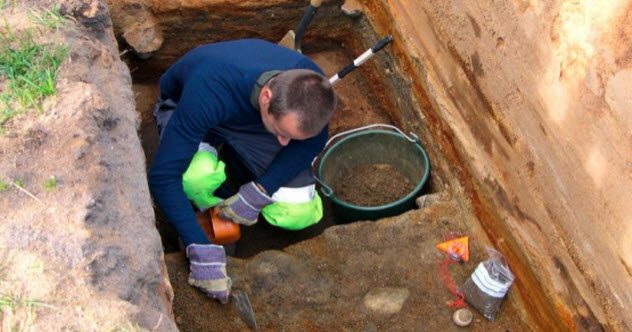
Around 5,500 years ago, a village was abandoned in modern-day Norway. In 2010, developers decided a seaside location at Hamresanden would make the ideal retirement spot. Then diggers found the ruins.
When archaeologists inspected the site, they were so enthralled that the discovery was deemed to be among Europe’s most important. The prehistoric village appeared to have been engulfed by a sandstorm and buried within hours.[1]
The site is noteworthy because of the people who lived there and their ceramics. Called the Funnel Beaker Culture, these first farmers of the Stone Age produced beakers with funnel-shaped openings. Despite flourishing in Europe (4000–2700 BC), pottery from the Stone Age has never been found intact in Norway.
Thanks to the sudden storm that preserved walls, weapons, and wooden artifacts, Norwegian archaeologists found their first unscathed vessel. Several large fragments will allow the reconstruction of about eight more beakers. The sandstorm sealed the settlement around 3500 BC but was not the first to sweep the area. Layers in the ground at Hamresanden show the deposits of several storms.
9 Volcanoes Weakened Ancient Egypt

Ancient Egypt experienced violent revolts during the Ptolemaic dynasty (305–30 BC), which included Cleopatra. Resentment over the rulers’ Greek origins was partially responsible.
Scientists found another crack in the foundations of this once-powerful nation—volcanoes. Ancient Egyptians were not aware of this geological feature, but it hit them where it hurt. Without the annual monsoon to flood the Nile and fertilize the land, crops would fail.[2]
It is uncertain where exactly the eruptions happened, but they can be traced in Egypt’s written records. Periods of civil unrest matched volcanic activity from Greenland and Antarctica, blasts powerful enough to block the Sun and stop the monsoon.
Twice, Cleopatra opened grain silos to the public—in 46 and 44 BC. Both years saw major eruptions. Her dynasty was cursed with volcanoes that matched the largest modern disaster, the 1991 Mount Pinatubo explosion.
During the Ptolemaic period, the likes of Pinatubo erupted around three times every 10 years. By the time Rome conquered Cleopatra, failed monsoons had decimated crops. Famine, plague, and corruption further fractured the civilization.
8 The Bronze Age Collapse
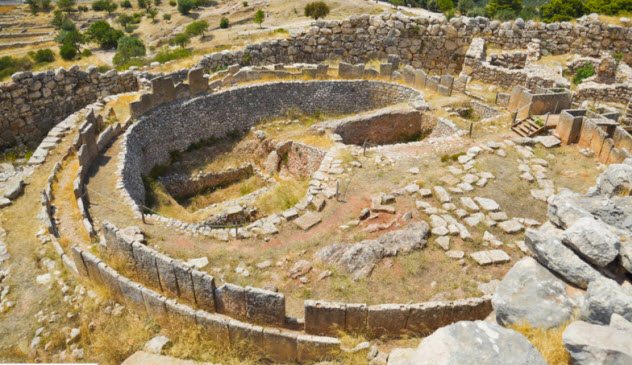
For those living in the eastern Mediterranean during the Bronze Age, life was miserable. War and starvation slowly degraded the great cities. Cultures disintegrated, including ancient Greece, or completely vanished like the Hittites.
This massive Mediterranean collapse was a mystery. Among the usual suspects was a bad drought, but when the truth was discovered, it was almost unthinkable.
A drop in rainfall was behind the chaos, but it did not last for just a few seasons. Drought strangled the region for 300 years. Larnaca Salt Lake in Cyprus was once a harbor. Scientists followed the centuries-long climate shift by recording the lake’s changes.[3]
Before 1450 BC, Larnaca was open to the sea. Over 100 years, it shrank into a land-bound lagoon, and by 1200 BC, pollen proved that surrounding farms stopped producing for centuries. Lack of food caused migrations, invasions, and the sacking of cities for generations.
Even though crop failure from drought was the cause, researchers believe that the weather worsened so gradually that few realized it was even happening.
7 Earliest Tsunami Victim
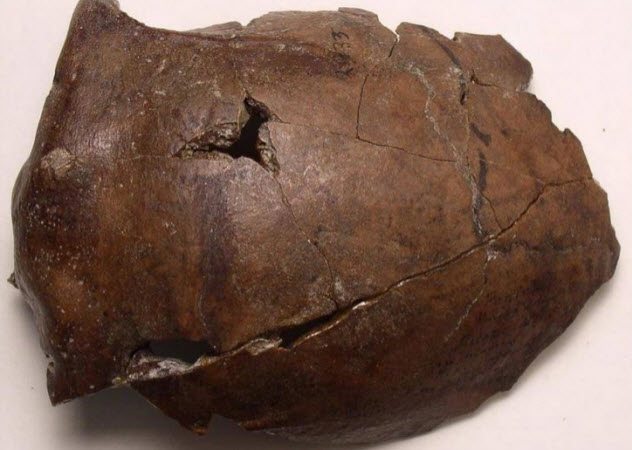
In 1929, a skull was unearthed in northern Papua New Guinea. Thought to belong to Homo erectus, radiocarbon testing showed the fragments were too young, around 6,000 years old, and belonged to a human. The cranium was a rare example of human remains from the area and made researchers curious. How did this person perish?
Incredibly, he or she could be the world’s oldest known tsunami victim. In 1998, a tidal wave deluged the same coast and left a distinctive geological and chemical scar. Despite being discovered 11 kilometers (7 mi) inland, the skull rested in soil similar to the modern disaster’s signature.
More importantly, both showed marine creatures called diatoms. Hailing from the deep sea, these diatoms proved that the ocean once flooded the skull’s location. Another check mark in favor of an ancient tsunami is the missing body. The skeleton could have separated if the individual’s grave was razed by the massive wave.[4]
If this ancient person was killed during the tsunami, it matched what happened to many of the 1998 victims. Crocodiles scattered the bones as they fed on the dead.
6 The Two Maidens
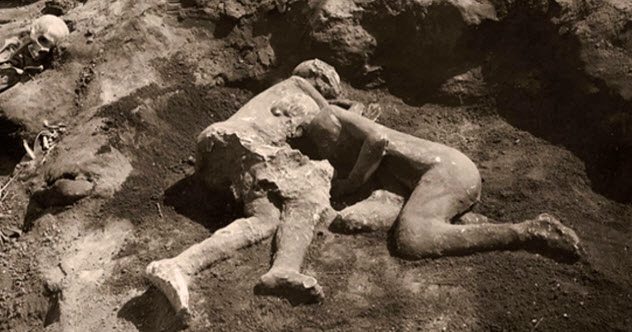
Personal tragedies abound in the petrified streets of Pompeii. Among the bodies found was a pair seeking comfort in each other’s arms. Instead, they died in AD 79 from deadly gas and ash as the nearby Mount Vesuvius erupted.
The event that hit the Roman city still ranks as one of history’s worst natural disasters. Due to the positions of the bodies, the assumption that they were two young girls earned them the title “The Two Maidens.” Both were on their sides, curled into each other.[5]
Tests in 2017 revealed a surprise and a mysterious relationship. Scans and DNA analysis showed that they were young men, one a teenager of around 18 and the other in his twenties. When the DNA additionally proved that they were not related, the scenario of protective brothers or cousins disappeared.
Since their postures betrayed an emotional connection, a theory suggested that the couple was gay. However, the nature of their bond can never be verified. Whoever they were, it is difficult not to be moved by the vulnerability of their last moments.
5 Possible Ebola In Athens

Ebola’s terrifying debut is considered by most to be the 1976 outbreak in the Democratic Republic of Congo. However, recent studies suggested that Ebola could be a prehistoric virus. Fragments of its DNA linger in different rodent species, hinting at an infection that occurred nearly 20 million years ago.
Researchers wondered if the disease jumped to humans before 1976. One event fits the bill.
In 430 BC, a mysterious epidemic ravished Athens for years. It came from Aethiopia, the Greek name for sub-Saharan Africa. The region has modern outbreaks of Ebola, and in the past, Aethiopians sought work in Greece.
Apart from having identified how the disease could have reached Athens, Ebola also resembles the famous plague. It started with fever, fatigue, and vomiting. Pain beset the head, stomach, and extremities. Some bled from the mouth and suffered skin lesions, thirst, and seizures. Most died after a week.[6]
Athenian physicians were also among the first to fall. A 2015 outbreak claimed the lives of 500 medical personnel. The plague of Athens could still prove to be something else. However, its origin, symptoms, and mortality rate are consistent with Ebola.
4 Tunisia’s Submerged City
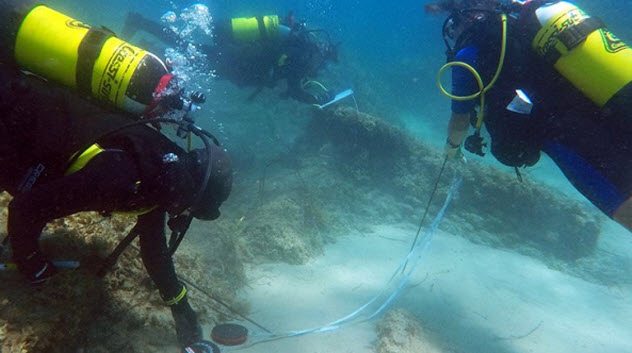
The Roman city Neapolis once stood in modern-day Tunisia. Historical records of Neapolis are scarce, but historian Ammien Marcellin recorded its end. On July 21, 365, an earthquake triggered a tsunami that sunk the city, and it remained lost for 1,700 years.
In 2017, vast ruins were found in the deep sea off the northeast coast and the view was dramatic. Covering 20 hectares (nearly 50 acres), divers encountered roads and monuments.
Interestingly, they also found garum tanks. Garum was a sought-after fish sauce used by the Romans and Greeks. Numbering about 100, the tanks provided important information about Neapolis’s economy. It showed that the city was likely the main producer of garum in Roman times.
The earthquake is thought to have released two tremors, the strongest measuring about a magnitude of 8.0. It forced up several places on Crete by 10 meters (33 ft) and is believed to be the same wave that brought destruction to the Egyptian city of Alexandria.[7]
3 Hut F40
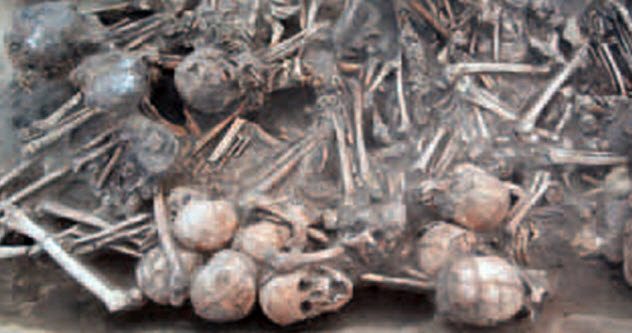
When archaeologists found a 5,000-year-old settlement in northeast China, they encountered a desperate scene. The village contained many huts, but one single-room home was stacked with 97 human skeletons.
It appeared that villagers were dying faster than the living could bury them. The bodies were crammed into the hut, known as “F40,” in layers before being set alight. Oddly, in the northwest sector of the house, most of the bodies were whole. The east mainly held skeletons with only skulls attached. Limbs cluttered the south.[8]
Today, the site is named Hamin Mangha and is both the biggest and most pristine ancient village in the region. The charred remains have one similarity with another mass grave in Miaozigou, also in northeast China.
Most of the victims were young. About half were 19–35 years old, with no older individuals. What exactly transpired is still a riddle, but archaeologists feel that a deadly infectious illness broke out in both cases.
2 The Eleutherna Family
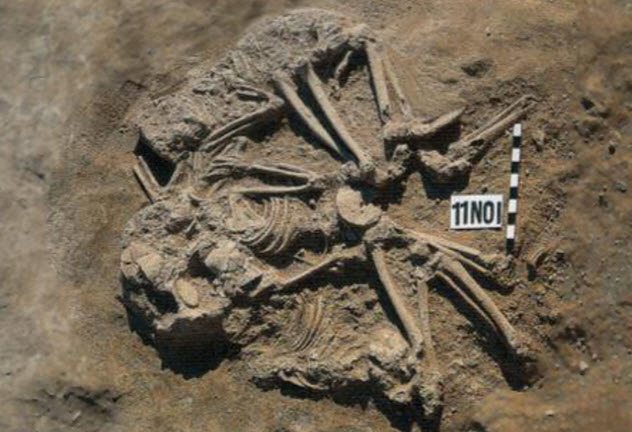
The same earthquake that destroyed Neapolis also killed a young family on the island of Crete. Their wealthy villa was discovered during the excavations of Eleutherna, a city completely razed by the powerful tremors.
The home was lavish. It contained many rooms, including a large banquet hall, cellar, and work areas. Furniture, jewelry, and chests with ornate ivory panels were also found.
Just outside the banquet hall in the courtyard were the skeletal remains of three people. The two adults, a man and woman, faced each other on their sides. They huddled protectively on either side of a young boy between them.[9]
The family might have attempted to flee the house during the catastrophe, only to die once they were outside. In particular, the two ivory chests highlighted the couple’s wealth and how they celebrated family milestones.
It is believed that the one carved with images of marine Greek mythology was their wedding present. The second box, depicting the birth and life of the hero Achilles, could have been commissioned to mark the arrival of their own infant son.
1 Evidence Of Mythical Dynasty
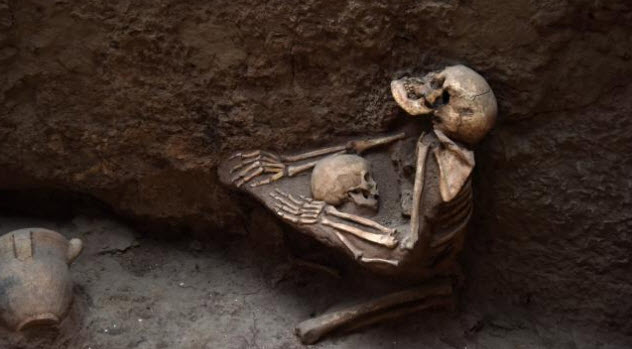
Lajia, China, contains homes with cowering skeletons. Located near the upper Yellow River, the site met with disaster 4,000 years ago. An earthquake buried families in their homes with massive mudslides. One woman died on the floor, her arm flung over a child. Further away, two youngsters clung to another adult.
But the image that captured worldwide media attention was a woman sitting alone against a wall with a toddler in her lap. Contrary to poignant headlines, DNA tests proved that they were not mother and son.[10]
Lajia could validate China’s first dynasty. The Emperor Yu is said to have received divine rulership after he diverted a flood by building canals. Some scholars dismissed his Xia dynasty as a yarn to strengthen the position of later emperors.
In 2016, researchers found signs of a deadly deluge in the upper Yellow River valley. It was caused by the same earthquake that had destroyed the village. Another mudslide blocked the river.
When the dam broke, around 15.8 cubic kilometers (3.8 mi3) of water reached as far as 2,010 kilometers (1,250 mi) away. Radiocarbon dating of the Lajia skeletons dated the earthquake at around 1920 BC. Interestingly, the Xia dynasty (if real) began around the same time.
Read more fascinating facts about ancient people on 10 People Who Were Erased From History and Top 10 Discoveries Adding To Debates About Ancient Humans.








